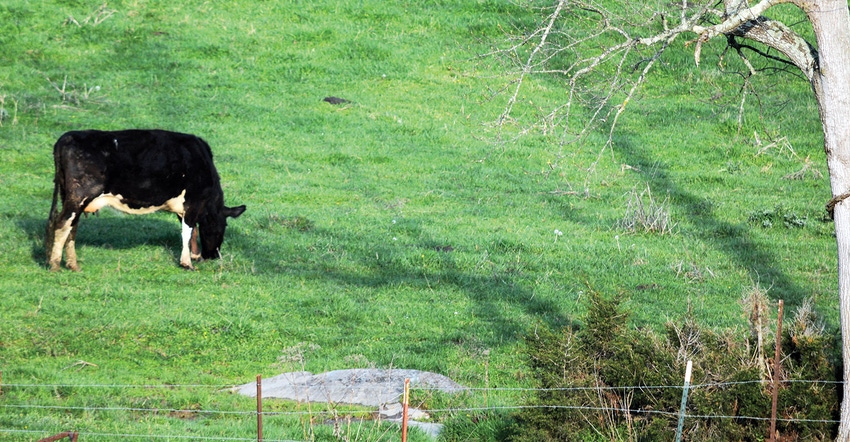
The cattle market has experienced extreme volatility in 2020, compounded by the COVID-19 pandemic.
During a recent webinar, Derrell Peel, Extension livestock marketing specialist in the department of agricultural economics at Oklahoma State University, and Josh Maples, Extension livestock specialist in agricultural economics at Mississippi State University, discussed cattle markets.
Cattle futures markets
"This is truly an unprecedented event we're going through right now," Maples said. "Looking at cattle futures markets, we peaked in mid-January for most of the feeder cattle and live cattle futures contracts, and then it fell off in mid-February. March had a lot of volatility with futures markets.
"Looking at the June live cattle contract, we hit $80 per hundred last week. That same contract was trading as high as $119 in January. Looking at the May feeder cattle market, we touched $150 in January, and it got down to $107 last week. Consequently, we've had some limit down days and a couple of limit up days recently, so we've had some wild volatility for sure."
In the third week of March, box feed cutout value jumped up sharply.
"Everybody knows beef has been flying off the shelves at grocery stores," Maples said. "Cash market prices the last couple of weeks have been pretty tough, too, but we've seen some pick up the end of March."
Market demands
Peel said some parallels in the market compare to the recession that took place about a decade ago.
"I think some of those parallels will be more in terms of recovery," he said. "That was a macroeconomic recession, while this is a macroeconomic event that's being pushed on by this external factor of COVID-19. There are some similarities, but there's a uniqueness to the current situation and how it is going to impact us going forward."
The implications of the virus touch all commodities.
"This is a truly incredible event because it doesn't just affect one thing but has ramifications for every commodity," Maples said.
In a recent job report, unemployment has risen.
"A lot of restaurants are closing or only allowing takeout, which affects consumer demand," he said. "2020 was going to be a pretty big beef supply year, possibly a record year. However, it's the consumer demand piece that ensures what the beef supply chain looks like over the next few months."
"If you think about the way beef gets marketed in this country," Peel said, "we have two major supply chains. Think of it as two exits off an interstate, one of them is the foodservice restaurant side or the hotel/restaurant institutional trade and the other is the retail grocery trade. We have about a 50/50 split between those two channels."
When businesses are closed and transportation is restricted, a great percentage of the foodservice traffic is moving onto the retail/grocery store side, causing an imbalance.
"People naturally react to uncertainty by buying more than they normally would to stock up and be prepared," Peel said. "This immediate doubling of ground beef demand at the grocery store level causes logistical issues because the grocery stores can’t meet the demand."
Box beef prices
Maples and Peel observed an immense spike in box beef prices.
"Because of the immediate increase in demand for beef at the grocery store, there is competition for a very limited supply of uncommitted meat in the market in the short run, so we've seen these dramatic increases in box beef prices," Peel said.
Markets tend to allocate limited resources to wherever they have the most value, which causes competition amongst retailers for the limited supply until the market evens out again.
Future implications
The timeline on when the market will become balanced is still unknown at this point.
"Since this is a global issue, there's a chance we could fall into a global recession," Peel said. "I think we will have a fairly robust recovery at some point, but we don't know the timeline of how long this is going to last. The economy is big, but the thing we're hitting the most is consumer spending. I think that's going to play a lot into what happens over the next few months. The hardest part of this is putting a timeline to it."
Markets are still trying to figure out what is the worst-case scenario.
"I think it's pretty clear we're going to see pretty limited opportunities for the market to change a great deal other than to have a lot of volatility right now," Peel said.
About the Author(s)
You May Also Like




